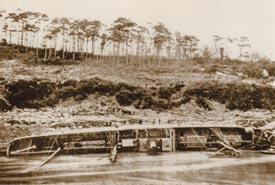|
|
 Decline of the PortBy the late 18th century, the narrow, tidal harbour that made Bristol Englandís second port began a slow decline. Ships grew larger and trade was being lost to other ports such as Liverpool. Something had to be done.
Jessop's Plan
Various schemes for improving the port were put forward but it wasn't until William Jessop's plan was begun in about 1804 that the port enjoyed a partial reversal in fortunes. Jessop's plan involved re-routing the Avon into its present-day course that will probably always be known as 'The New Cut'. The original course of the river was blocked at either end of the city to create a 'floating' harbour with a constant water level. Locks and feeder canals enabled shipping to come and go and some fresh water to circulate. The Feeder Canal created a new extension to the harbour complex to the east. New areas of land became accessible for commercial and industrial development.
 The New Harbour
The opening of the Floating Harbour in 1810 extended the life of the port, but it would never regain its former status. Ships grew larger and accidents became more frequent. Wrecks could block the river for months, threatening the viability of the port. Eventually, Brunel was called in to make some modifications to Jessop's plan but the Gorge and the tidal Avon that had served medieval Bristol so well proved to be its downfall in the age of the Industrial Revolution.
The port declined rapidly in the late 1960s and closed in 1977. The docks area is now mainly used for recreation and housing. Find out more about Bristolís maritime history through Visit Bristol.
|
|


